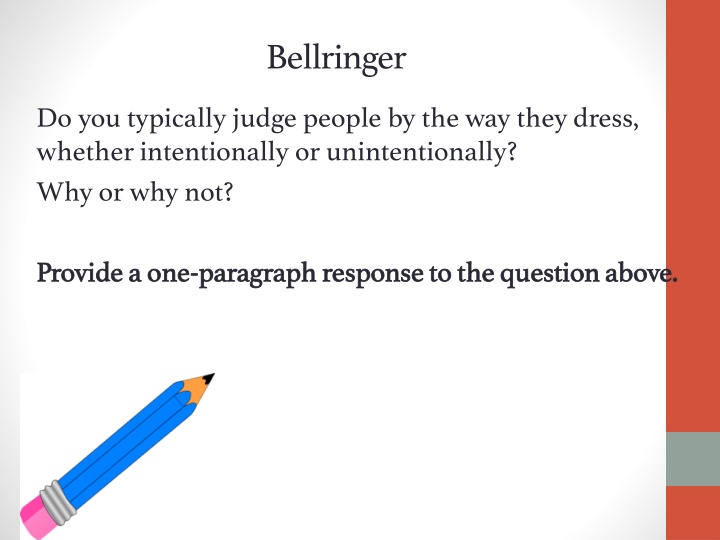
Judgment Based on Dress in Chaucer's Works
Chaucer's literary works such as "The Canterbury Tales" delve into how clothing and appearance can reveal aspects of a person's personality, social status, and intentions. This analysis explores the nuances of judgment based on attire, drawing insights from medieval dress codes and characters like the Knight, the Franklin, the Wife of Bath, and the Doctor. By examining Chaucer's sharp eye for dress, one can understand the complexities of perception intertwined with fashion choices.
Download Presentation

Please find below an Image/Link to download the presentation.
The content on the website is provided AS IS for your information and personal use only. It may not be sold, licensed, or shared on other websites without obtaining consent from the author. If you encounter any issues during the download, it is possible that the publisher has removed the file from their server.
You are allowed to download the files provided on this website for personal or commercial use, subject to the condition that they are used lawfully. All files are the property of their respective owners.
The content on the website is provided AS IS for your information and personal use only. It may not be sold, licensed, or shared on other websites without obtaining consent from the author.
E N D
Presentation Transcript
Bellringer Do you typically judge people by the way they dress, whether intentionally or unintentionally? Why or why not? Provide a one Provide a one- -paragraph response to the question above. paragraph response to the question above.
Chaucers Sharp Eye For Dress 14thCentury Attire
Prologue Prologue Chaucer relies on the details of the pilgrim s clothing and a general knowledge of the do s and don t s of fashion laws to reveal their Personalities Positions on the social ladder Attempts at modesty or deception
Medieval Dress Codes Medieval Dress Codes The rules dictating style depended on whether you were rich, middle-class, or poor. No one below the rank of knight could wear fur Merchants could only wear knights clothes if they were 5 times wealthier Women were forbidden from wearing silk head coverings
Modest Dress Modest Dress The Knight could have adorned himself with fur and gold, but he wore a coarse tunic, stained and dark. He could have fooled fashion watcher s into believing he was without rank.
Pleasure Loving Pleasure Loving The Franklin (wealthy landowner) carried a little purse of silk described to be as white as morning milk
Pleasure Loving Pleasure Loving The Wife of Bath s flowing mantle hid her large hips, her handkerchiefs were finely woven, her stockings were of the finest scarlet red and her shoes soft and new.
Clothing That Clothing That S Suits uits T The he P Profession rofession The Doctor was adorned in alarmingly in blood- red garments lined with taffeta, as if he were advertising his profession. Yet, Chaucer wrote that he watched every cent and was rather close as to expenses.
Discussion Prompt Discussion Prompt In Chaucer s time, dress was indicative of class. Is this idea still relevant or applicable in today s society. Why or why not?
Conclusion Conclusion No matter what you wear or when you live, your clothes say a lot about who you are, where you fit, and what you aspire to be.
